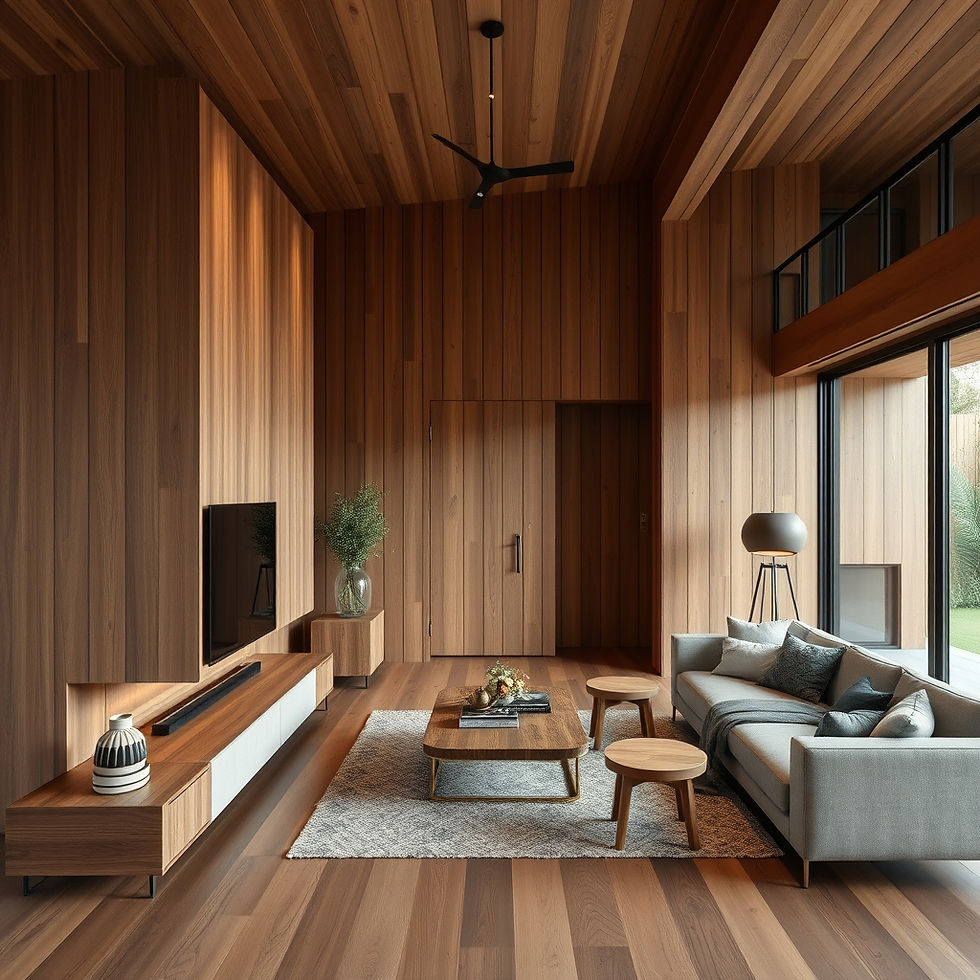Wood Warping: The 9 Best Ways To Prevent it
- sales61423
- Feb 13, 2023
- 4 min read
Definition of Wood Warping
Wood warping is a common issue that occurs when wooden materials change shape or twist, causing them to become distorted or misshapen. This can happen for various reasons, such as changes in moisture levels, improper drying techniques, or poor storage conditions.
Importance of preventing Wood Warping
Wood warping can significantly impact the appearance, stability, and longevity of wooden products, making it essential to prevent this issue. For example, a warping board in a piece of furniture can cause doors to stick or drawers to become difficult to open and close. In the case of wooden constructions, such as flooring or roofing, warping can also compromise the overall structure and safety of the building.
Preventing wood warping requires a comprehensive understanding of the causes and preventive measures. In this article, we'll be exploring the various reasons why wood warping occurs and how to effectively prevent it, to ensure the stability and longevity of your wooden products.
Causes of Wood Warping
Changes in Moisture Content
One of the primary reasons for wood warping is changes in moisture content. Wood is hygroscopic, which means it absorbs and releases moisture from the air depending on the relative humidity. When wooden materials are exposed to changes in moisture levels, such as extreme fluctuations in temperature or humidity, they can shrink, swell, and warp.
Poor Drying Techniques
Another cause of wood warping is poor drying techniques. When wood is harvested, it typically contains a high level of moisture, which must be removed before the material can be used. Improper drying techniques can result in uneven moisture loss, causing the wood to warp as it dries.
Improper Storage
Finally, improper storage can also contribute to wood warping. If wooden materials are stored in a damp or humid environment, they can absorb moisture, causing them to swell and warp. On the other hand, if they are stored in a very dry environment, they can lose moisture, causing them to shrink and warp.
It's essential to keep wooden materials protected from changes in moisture levels and properly stored to prevent warping. In the next section, we'll explore the various preventive measures to help prevent wood warping.
Preventing Wood Warping
1. Proper Moisture Management
Proper moisture management is the key to preventing wood warping. Here are a few ways to ensure that the moisture levels in your wooden materials are well-managed:
2. Monitoring Humidity Levels
Keeping track of the humidity levels in the environment where your wooden materials are stored is essential. You can use a hygrometer to monitor the relative humidity and make necessary adjustments to maintain a stable environment.
3. Using a Moisture Metre
A moisture metre can help you determine the moisture content of your wooden materials and monitor changes over time. This will help you identify any potential problems early on and take the necessary steps to prevent warping.
4. Controlling the Environment
Controlling the environment where your wooden materials are stored is also critical. Keep them in a dry place with stable temperature and humidity levels to prevent moisture absorption or evaporation.
5. Proper Drying Techniques
To prevent wood warping, it's crucial to use proper drying techniques when harvesting and processing wood. Here are two commonly used methods:
Air-drying: This natural drying process involves stacking freshly cut wooden materials in a well-ventilated area to allow the moisture to escape gradually. This method is best suited for larger pieces of wood and can take several months to complete.
Kiln-drying: This is a faster process that uses heat and controlled humidity to quickly dry wooden materials. This method is best suited for smaller pieces of wood and can take anywhere from a few days to a couple of weeks.
6. Proper Storage Techniques
Finally, proper storage techniques can help prevent wood warping. Here are a few ways to ensure that your wooden materials are stored correctly:
7. Storing in a Dry Environment
Storing your wooden materials in a dry environment is essential to prevent moisture absorption and warping. Make sure the area is well-ventilated and protected from humidity and moisture.
8. Stacking Properly
When stacking wooden materials, it's crucial to stack them properly to prevent warping. Stack the pieces evenly and provide adequate space between each layer to allow air to circulate.
9. Using Protective Coatings
Using protective coatings, such as sealants or varnish, on your wooden materials can help prevent moisture absorption and warping. This will provide an additional layer of protection and help maintain the integrity of the wood over time.
In conclusion, wood warping is a common problem faced by many woodworkers and homeowners alike. However, it can be prevented with proper moisture management, proper drying and storage techniques, and the use of protective coatings.
At Proboard, we understand the importance of maintaining the integrity of your wooden materials and the frustration of dealing with damaged flooring. That's why we offer a wide range of high-quality wooden products and services to help you prevent wood warping and keep your flooring looking its best.
Whether you're a woodworker looking for the right materials for your next project or a homeowner dealing with damaged flooring, our team at Proboard is here to help. With our extensive experience and expertise in the field, we can help you choose the right products and provide the support you need to ensure the longevity and stability of your wooden materials.
Don't let wood warping ruin your projects or damage your flooring. Contact us today at Proboard, and let us help you protect and preserve your wooden materials for years to come.





Comments